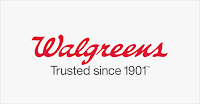Investing, for many of us, is one of trial and error. Lessons may become increasingly expensive as
we go. Wisdom is hard won over years or
decades. At some point we realize that,
had we known when we started what we know today, we would have done things
differently. We’d probably be farther along
today than we are. Without those
difficult and costly lessons, I suppose our wisdom would not be as deep or
meaningful to us as it is.
Real estate investing is an area that provided many tough
investing lessons I find helpful today.
Here are seven.
Cash is fact. Profit is theory.
In real estate, it’s easy to become enamored with rates of
investment return, often no more than paper calculations. Spreadsheet numbers that look good don’t
cover monthly costs. Cash does. Don’t get caught in the ROI on paper. Anyone can make it “look” good. Cold, hard cash makes it good.
Liquidity is valuable.
Real estate taught me the value of liquidity. When a rental property is declining in value
or the cost structure spirals out of control, hitting the sell button on your
laptop and walking away from a bad situation isn’t an option. The illiquid nature of rental property means
there are no stop loss exits. You have to stay the course and hope it gets
better. Somehow.
Financial leverage is an accelerant.
Leverage used buying rental properties can propel you into
the atmosphere - or into the ditch. Used
judiciously in small volumes leverage can be helpful. Thrown like gasoline on an open flame at
close range yields excitement you can’t imagine. Not the good kind.
Diversification reduces risk.
Buying rental real estate, for many, means putting your eggsin one basket. The entry price normally
requires it unless you have unlimited cash or you’re willing to play fast and
loose with the financial accelerant noted above. No liquidity and no diversification means when
things go wrong it does so with all your investment money and there’s little
you can do. Until you’ve had the wheels
come off the cart, words don’t do justice to reality.
Property taxes have no offset.
With most investments there are ways to offset Federal or
state income taxes. For instance,
non-cash expenses like depreciation can shelter cash income from Uncle Sam’s
clutches. Excess operating losses may be
carried forward to good years offsetting cash profits for tax mitigation
purposes. Real estate, however, carries
with it property taxes that can’t be mitigated unless the value of the property
crashes. There are no write-offs or
shelters to shield your investment from property taxes. You don’t realize this until a year’s worth
of thin cash income disappears in a single check to your state treasurer.
Quality of life is more important than I thought.
Investments carry with them different workloads. The overhead spent is not equal across
all. Rental real estate entails evening,
weekend, and holiday work plus travel. Time
spent on a property is time not spent with family and friends. Having your financial eggs in one basket and
needing to guard that basket closely produces anxiety overshadowing many good
things in life as well.
Opportunity / cost should not be discounted.
There are many options into which you can put your
investment dollars. Some are better than
others. You should assess these options
against one another before making your allocation decision. Giving up holidays and celebrations, being
absent during family emergencies, or even losing sleep to deal with rental
problems can quickly obscure any cash benefits.
Don’t discount time with those you love against a few extra bucks.
A superior option.
Dividend Farming doesn’t come with the boat anchors above
making it a superior investment option relative to rental real estate. For example:
- Dividend payments are cash, not paper profits.
- Dividend stocks, particularly those of large, publicly traded companies are highly liquid.
- Dividend stocks enable diversification across a wide range of firms and industries at relatively low cost.
- Dividend stocks do not require financial leverage. You don’t have to borrow to invest. Ever.
- Dividend stocks don’t come with property taxes assessed against your dividend distributions.
- Quality of life? Incomparable. I’ve yet to receive a late night or holiday call from a dividend paying firm with a problem. Nor have I spent a Saturday traveling to fix a leak, repaint anything, or waste my time showing a property to prospects failing to make their appointments.
The benefits of dividend paying stocks relative to rental
real estate generate a clear, decisive opportunity-cost advantage in their favor.
It took me nearly a decade of land-lording to get the
lesson. Apparently, I’m a slow
learner. The process was expensive,
painful, and to a degree, unnecessary.
However, the investing wisdom gained is deeper than it would have been
without the experience.
The thoughts expressed here
are those of the author, who is not a financial professional. Opinions
should not be considered investment advice. They are presented for
discussion and entertainment purposes only. For specific investment
advice or assistance, please contact a registered investment advisor, licensed
broker, or other financial professional.





